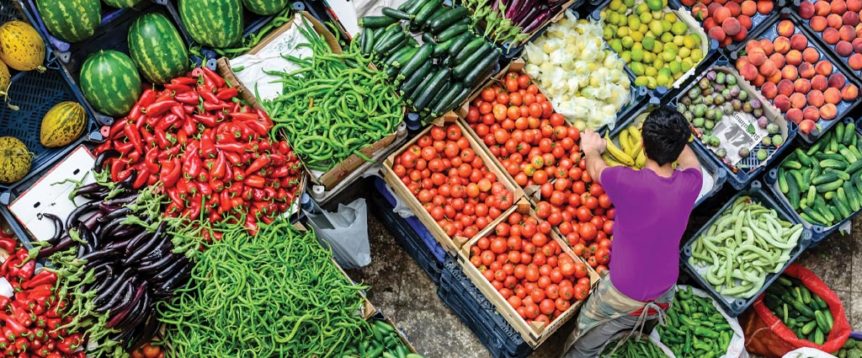In ancient times, Turkey was the intersection of Asia and Europe, a crossroads of trade that pollinated the region with different cultures and cuisines. Once known as Anatolia, Turkey’s rich history spans across centuries ruled by the Persians, Romans and Ottomans, finally becoming an independent republic in 1923. Its geography is diverse—with rugged mountains in the east, fertile valleys in the west, semiarid deserts in the southwest, and temperate zones along the Black Sea coast to the north and the Mediterranean Sea to the southeast—and the country’s cuisine reflects this variety. But the one constant for Turks throughout history has been sharing a meal with family or friends, a bedrock of the culture.
According to Robyn Eckhardt, author of Istanbul & Beyond: Exploring the Diverse Cuisines of Turkey (Mariner, 2021), you won’t see Turks eating fast food behind the wheel while driving. “I’ve seen truck drivers stop in the median of a highway, set up a portable barbecue grill and have a picnic lunch right there,” she says. “Stopping for the ritual of eating and eating together is very important, because food, gathering together and eating communally is a big focus—enjoying food is how you welcome guests and how you spend time together.”
While Turkish food appears meat-heavy, particularly focusing on lamb, Eckhardt says that’s not the case. In fact, the cuisine is very regional and, in many areas, people opt for beef, seafood, or vegetables and legumes at the heart of a meal. “Before researching my book, I assumed that Turkish food was kebabs, small plates called meze, chopped salads and baklava—the things you see in Turkish restaurants in America,” Eckhardt says. “I discovered that is a fraction of Turkey’s dishes. The food is really very regional.”
Eckhardt describes Turkish food as hyperlocal and ultra-fresh, with many dishes prominently featuring olive oil, whether using it for frying or drizzled on top. A meal will always include at least two side dishes of vegetables (cooked or fresh) or legumes, plus yogurt as a topping or dip, sometimes with savory herbs or spices added, to add heft to a meal. Legumes (like garbanzos, lentils or white beans) or vegetables cooked in a tomato sauce, stuffed vegetables like eggplant, and vegetables and meat layered and baked in clay pots (called güveç) are typical dishes throughout the country. Tost, or grilled cheese, is also a familiar dish. Many types of vegetables are pickled and served as a side dish, and artisan products are commonly found at the markets frequently visited throughout the country. Preparations for dishes are simple because they rely on the flavor of the ingredients to come through.
“Turkish people are passionate about freshness and getting the best ingredients from the market, and not doing too much to change them,” says Eckhardt. “Markets are everywhere, and going to the market is a part of daily life.”
Because eating is a shared experience, family and friends will gather and enjoy small dishes, ordering a few at a time, eating and drinking over several hours at cafes called meyhane. Ordering meze, the small, shareable plates, will be accompanied by beer or wine, and finish with a grilled or fried fish. At home, cooks will make sourdough loaves or flatbread and serve them with spicy dips. They’ll roast a whole chicken with caramelized onions or serve vegetables stuffed with bulgur. Stews may have a broth infused with yogurt, and meatballs are nestled in a tomato sauce with seared eggplant and thyme. Spices, especially crushed red pepper and Aleppo pepper, are common enough to be found on restaurant tabletops, and warmer spices that once traveled the Silk Road— like cinnamon, ginger, allspice and even curry— are also used.
Regardless of the Turkish dishes you choose to try, gather with those you love to enjoy them the traditional Turkish way—eaten in the company of friends and family, savoring not only the flavors of the food, but also of community.

